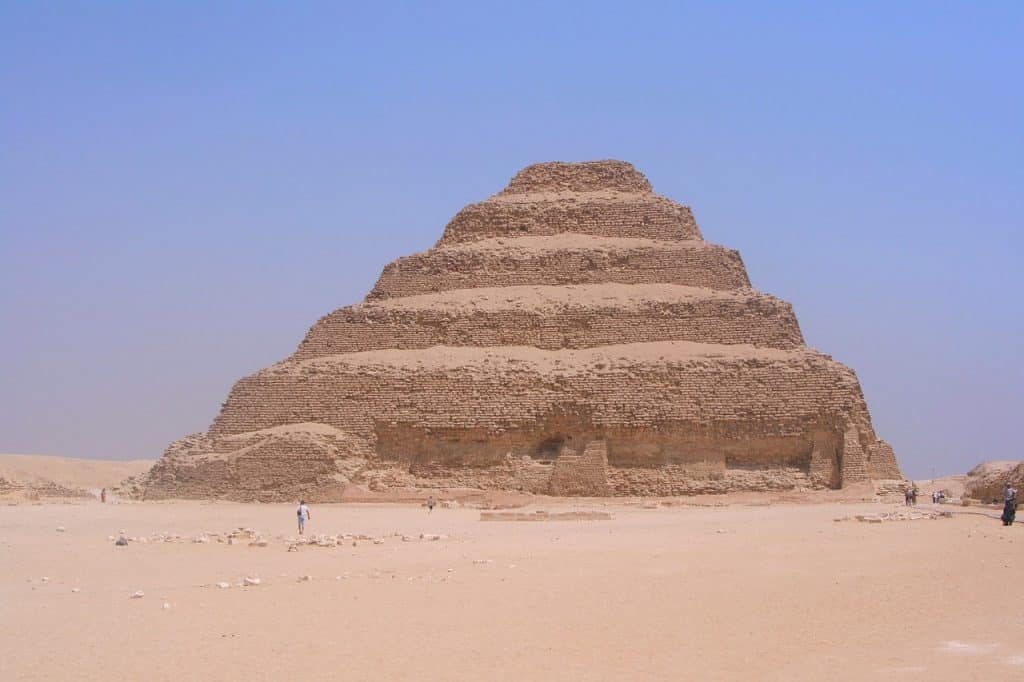10 Top Rated Egypt Landmarks To Visit
Having been in the world’s history for around 4000 years, Egypt is home to a plethora of impressive and mysterious landmarks built by the Ancient Egyptians. From towering pyramids, intricate temples, complex underground systems, to spectacular hieroglyphics, you’ll never get short of things to be amazed of in Egypt.
Egypt is not just home to dazzling temples and tombs, but also of the ancient Pharaohs. The vast land of Egypt has all sorts of activities for all kinds of adventurers. You can go to a superb scuba diving in the Red Sea, go sunbathing in Egypt’s stunning beaches, or go kayaking in the world-famous Nile River. Indeed, there is always something for everyone!
And of course, your visit to Egypt wouldn’t be complete if you don’t visit the country’s top-rated landmarks, including famous buildings and soaring monuments.
Without further ado, here are 10 spectacular Egypt landmarks to visit.
Table of Contents
1. The Great Pyramid of Giza
Also known as the Pyramid of Cheops or the Pyramid of Khufu, the Great Pyramid of Giza is one of the Seven Ancient Wonders of the World. It is also the largest and oldest pyramids in the Giza pyramid complex.
Egyptologists believe that the pyramid was built as a tomb for Pharaoh Khufu, the Fourth Dynasty Egyptian pharaoh. It is also said that the enormous pyramid was constructed over a 20-year period.
Thousands of tourists from different parts of the world visit Egypt to see first-hand the historic and gigantic limestone pyramids.
Fun fact: The Great Pyramid consists of an estimated 2.3 million blocks, which most are believed to be transported from nearby quarries.
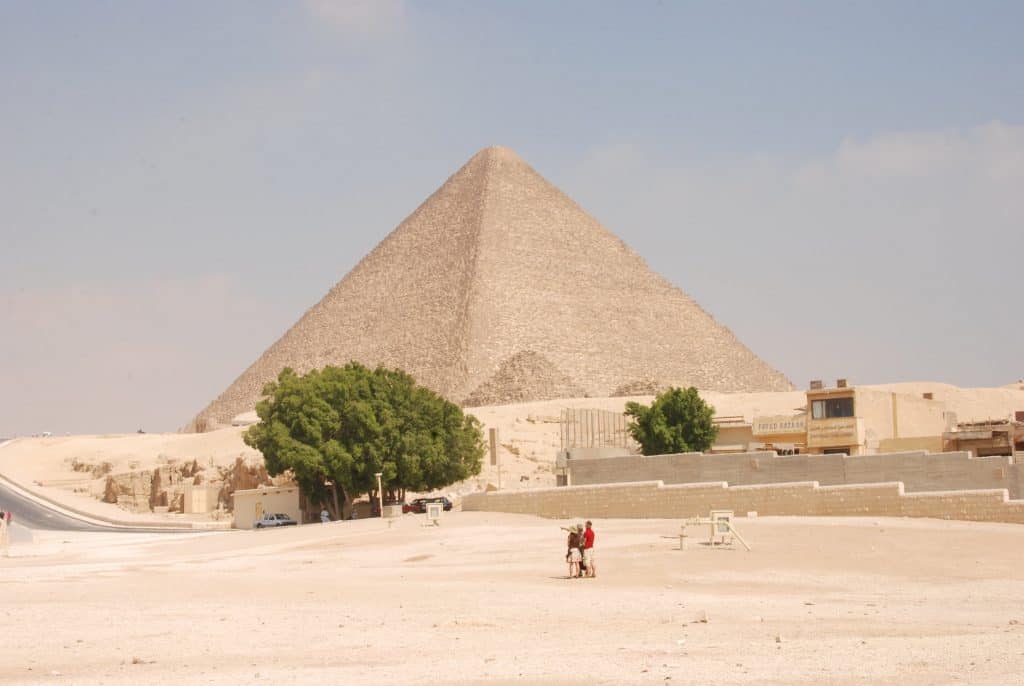

2. The Great Sphinx of Giza
The massive half-lion and half-human limestone statue sits perfectly in the center of the vast sun-bleached land of Giza. The Great Sphinx (or just Sphinx) is another spectacular Egypt landmark that can be seen just a few meters away from the Great Pyramid.
The Sphinx is known to be the oldest large statue in Egypt, which is believed to have been built around 2500 BCE. Locals thought that the gigantic mythical creature resembles the Egyptian Pharaoh Khafre, who was the ruler in Ancient Egypt during the construction of the sculpture.
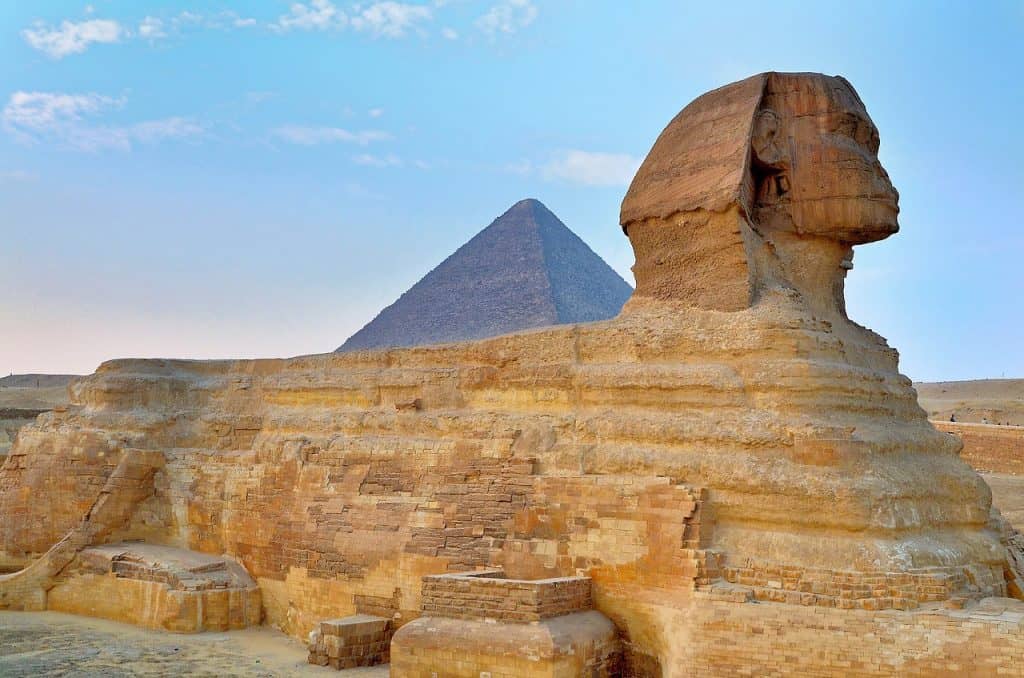

3. Karnak Temple
In the amazing Karnak Temple are massive columns that are intricately carved to support the temple’s main hall. The hall was built as a place of worship for some of the Egyptian gods. It is believed to have been built in 2000 BCE, which means this Egypt landmark has been standing for over 4000 years.
Enjoy taking photographs of the designed column. Feel the isolation and picture Egyptians performing worship to their gods.
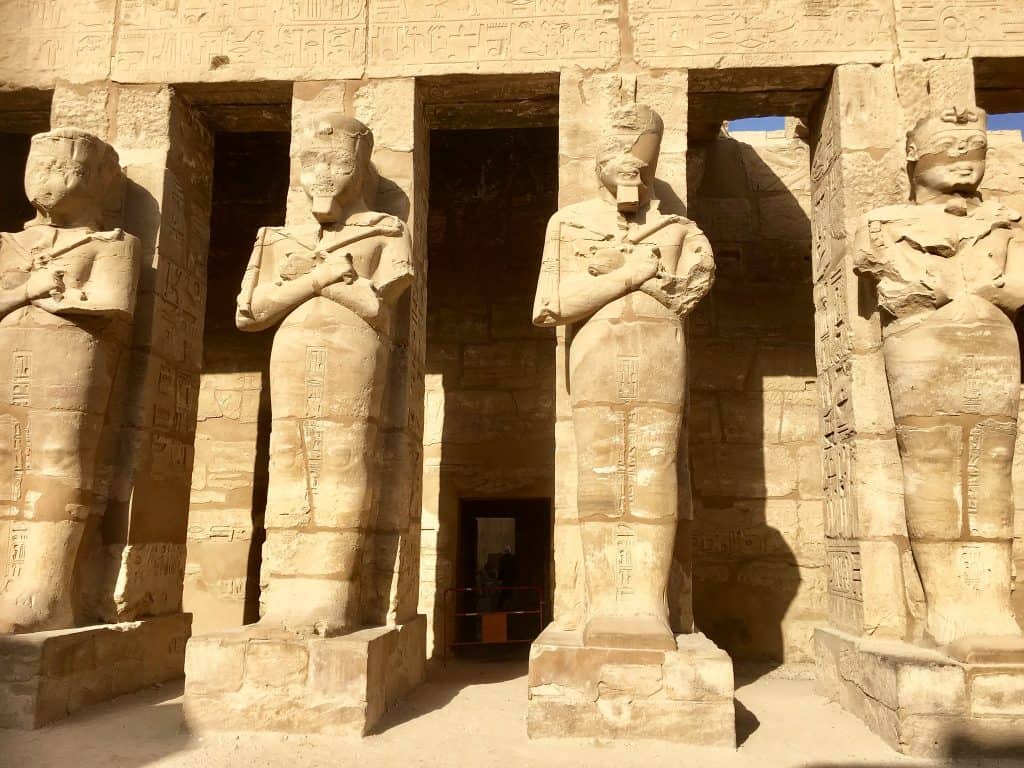

4. Abu Simbel
In the village in Aswan Governorate in Upper Egypt is where you will find Abu Simbel temples. They are two massive carved-out temples of the mountainside. According to history, the twin temple served as a monument to Pharaoh Ramesses II and his queen Nefertari.
The complex is part of the UNESCO World Heritage Site and continues to attract tourists. Abu Simbel is located on the banks of the Nile River. In the entrance are towering standing guard statues that will leave you in awe. It is thought that it took 20 years to finish the construction.
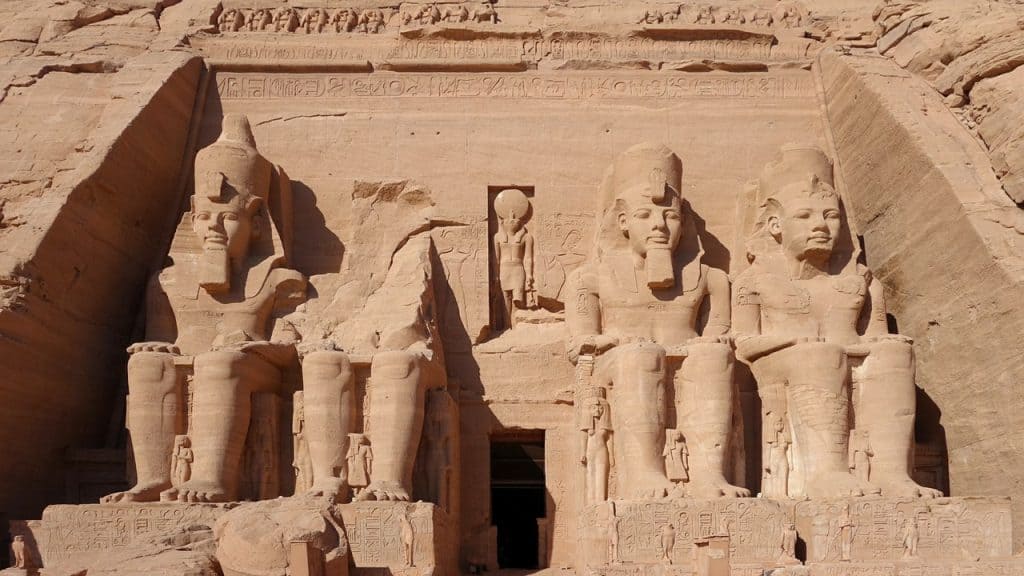

5. Valley of the Kings
Also known as the Valley of the Gates of the Kings, this public monument was built by the ancient Egyptians for their pharaohs. From 1539 to 1075 BCE, the valley served as a royal burial ground for pharaohs, including Tutankhamun, Seti I, and Ramses II. High priests, queens, and other elites from the 18th to 20th dynasties are also buried in the Valley of the Kings.
The ancient Egyptians believe in the afterlife. Evidence shows that the deceased are being prepared for the continuing life. Underground tombs were stocked with all the material goods that a rule might need in the “next world.”
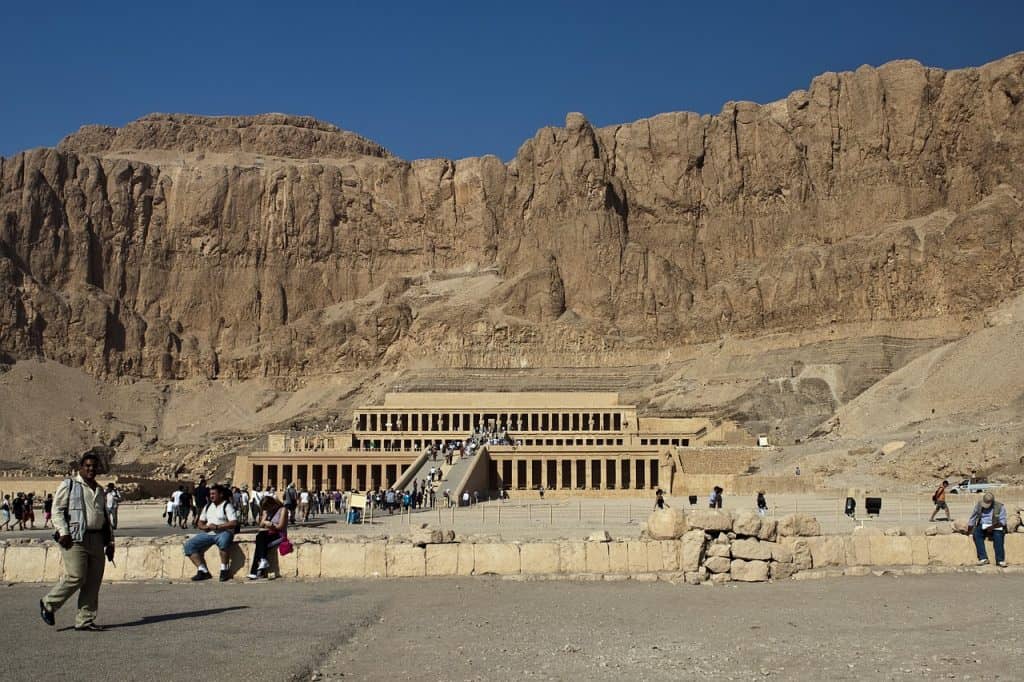

6. Colossi of Memnon
The Colossi of Memnon is yet another spectacular Egypt landmark you should not miss. There you will see two massive stone statues of the Pharaoh Amenhotep III, who ruled Egypt during the 18th dynasty.
The gigantic, mountain-high statues are thought to have been standing since 1350 BCE. The twin statues resembles pharaoh Amenhotep III in a seated position with his hands resting on his knees while facing eastwards towards Nile River.
Tourists always stop by the Colossi of Memnon before heading to the beautiful Nile River.
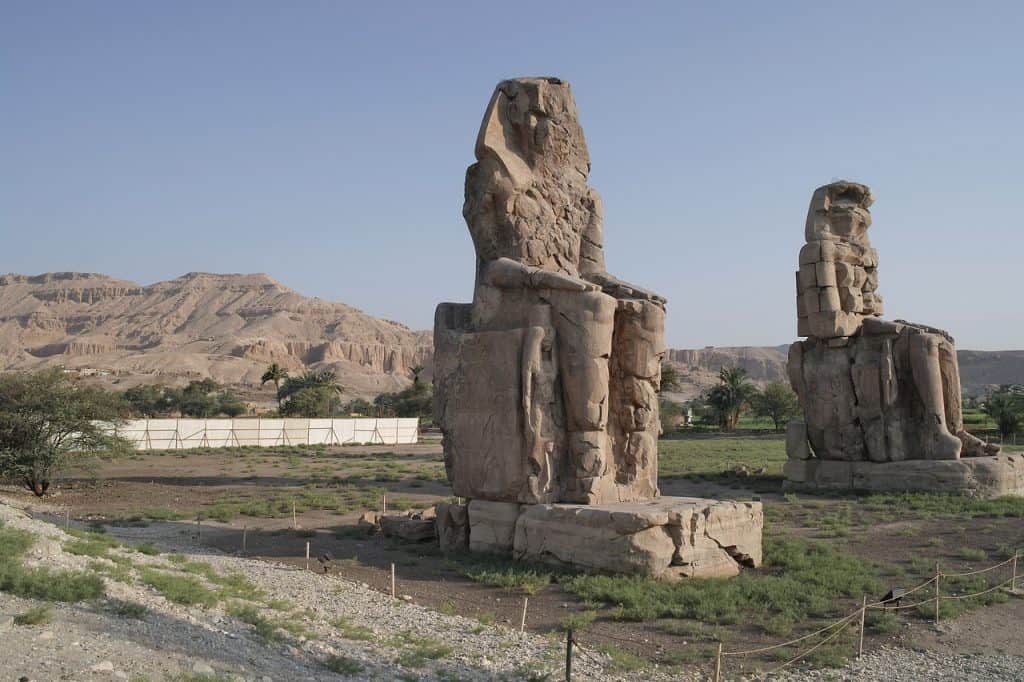

7. Egypt Museum
Collections of the ancient Egyptian antiquities are all kept in the famous building of Egypt Museum. It was built in 1901 and is one of the largest museums in the region.
If you want to see the most important ancient artifacts, then Egypt Museum should be on top of your list. There you will be mesmerized with the shining and glittering treasures of Tutankhamun and other significant pharaohs alongside their jewellery, tous, and eating bowls, and grave goods.
It’s like walking in the past. It’s truly a great place to ponder about the life of ancient Egypt.
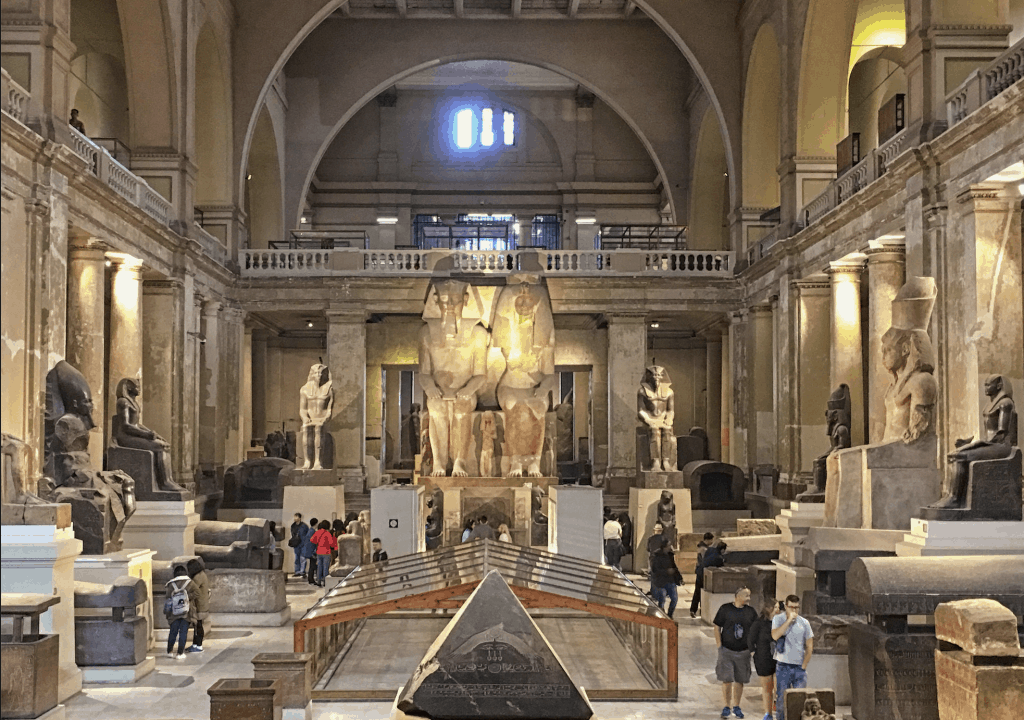
8. St. Catherine’s Monastery
At the foot of the famous Mount Sinai lies a famous Egypt landmark, Saint Catherine’s Monastery. Mt. Sinai is where Moises received the two stones inscribed with the Ten Commandments.
The monastery was given a UNESCO World Heritage Site status and is part of the wider Greek Orthodox Church. It is also controlled by the autonomous Church of Sinai.
The famous Burning Bush can also be found in this place. It is in front of the Burning Bush which Moses received his first instruction from God to lead the Israelite out of Egypt and into Canaan.
Local vendors sell souvenir items just outside the monastery.
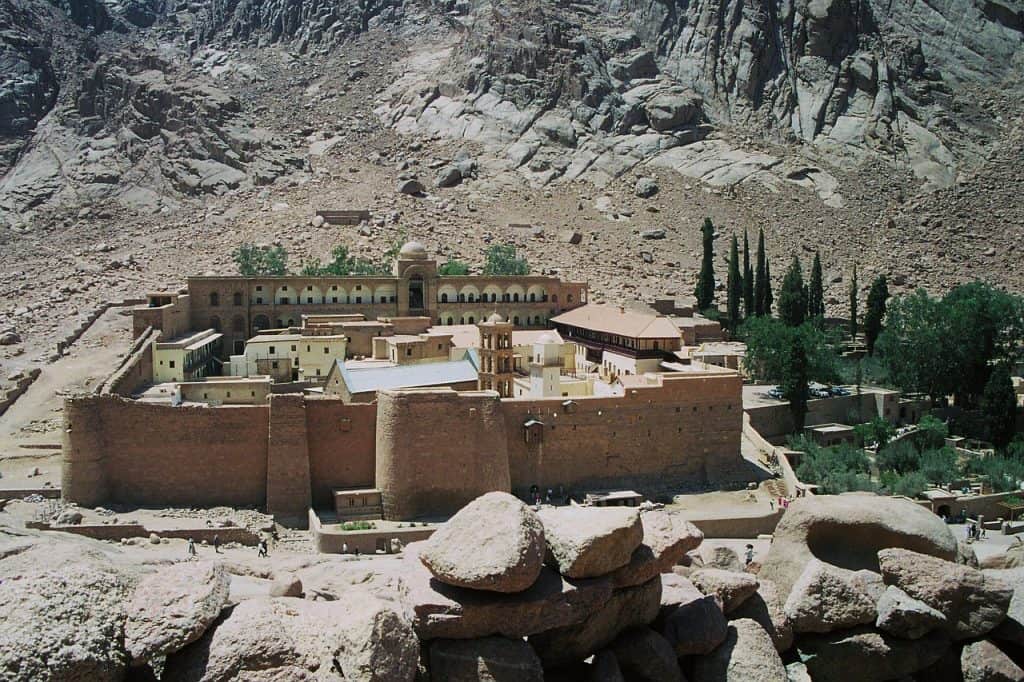

9. Temple of Luxor
In the heart of the modern town on the east side of the Nile River is Luxor, which was initially known as Thebes. Luxor Temple is a large, complex Ancient Egyptian Temple. The strikingly beautiful monument was built by Amenhotep III and Ramses II, which are New Kingdom pharaohs.
The massive first pylon was raised by Ramses II. The entrance was decorated with his military exploits, including the Battle of Kadesh. Next is the Great Court of Ramses II, which was surrounded by a double row of columns with lotus- bud capitals. The walls were decorated with scenes of the pharaoh worshipping and making offers to the gods.
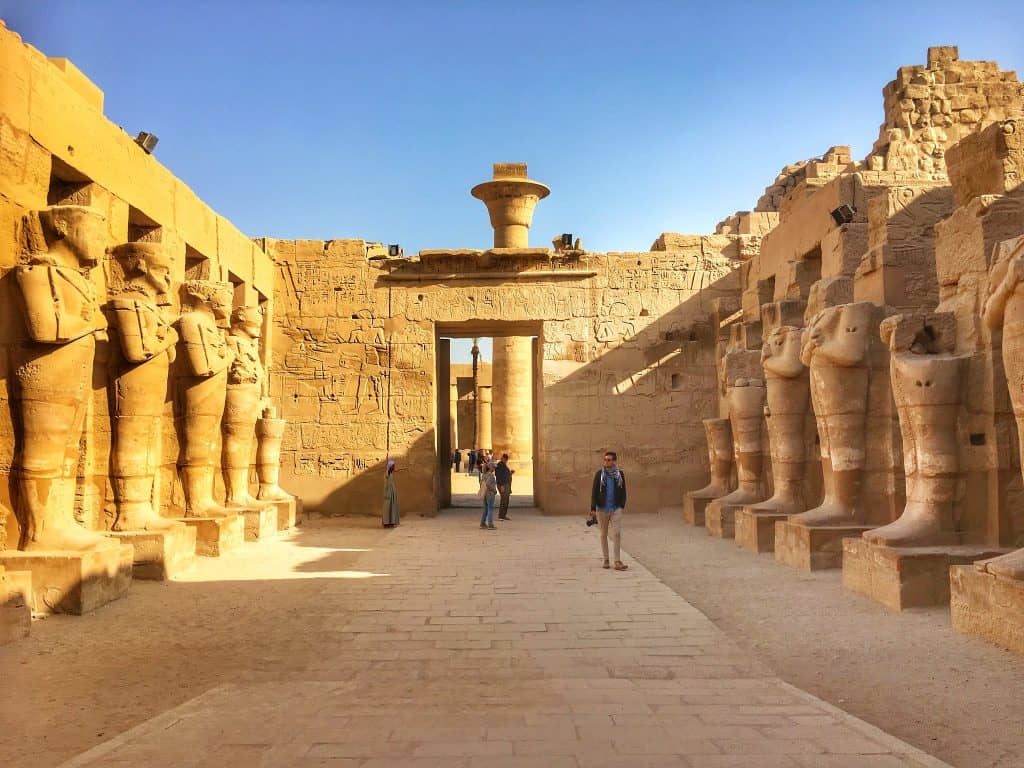

10. Pyramid of Djoser
Built in the Third Dynasty (around the 27th century), the Pyramid of Djoser served as the burial place of Pharaoh Djoser. Up to this date, the enormous pyramid continues to fascinate thousands of tourists.
Inside the pyramid are temples, chapels, and a courtyard. And interestingly, there are 13 fake doors built into the wall. This Egypt landmark will surely stun you with its sophisticated architecture.
